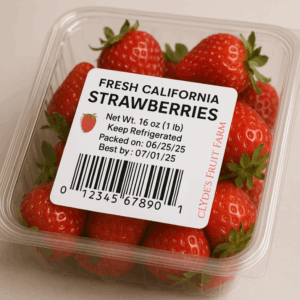
From grocery stores to global warehouses, barcode labels are the silent heroes of modern business. These compact, scannable codes might seem simple, but their impact on efficiency, inventory accuracy, and customer experience is massive.
A barcode label is a printed tag containing a machine-readable code, typically a series of vertical lines (1D) or a square pattern (2D, like QR codes). Scanning these codes instantly relays information about a product, shipment, or process.
Retail Products: Every item in your cart likely has a barcode label—used for pricing and inventory.
Shipping & Logistics: Barcodes track packages from warehouse to doorstep.
Healthcare: Medications and patient wristbands are labeled for safety and traceability.
Manufacturing: Parts and tools are labeled to streamline production lines.
Speed & Accuracy: Reduce human error with quick scans instead of manual input.
Real-Time Tracking: Know exactly where products are in the supply chain.
Inventory Control: Avoid overstocking or stockouts with live inventory data.
Cost Efficiency: Save labor time and reduce loss from errors.
Your barcode label isn’t just functional—it’s also a part of your brand. Design matters!
Include product names, lot numbers, and best-by dates.
Use materials that match the product environment (e.g., waterproof labels for produce).
Ensure contrast and white space around the barcode for easy scanning.
Add a “locally grown,” “organic,” or “handcrafted” sticker to personalize produce or small-batch goods.
Many brands are integrating QR codes to link customers to recipes, sourcing info, or brand stories—bridging physical packaging with the digital experience.
Whether you’re labeling strawberries at the farmer’s market or managing thousands of SKUs, your barcode labels should be clear, consistent, and aligned with your brand. Let us help you design labels that work hard and look great.